#canaanite gods
Text
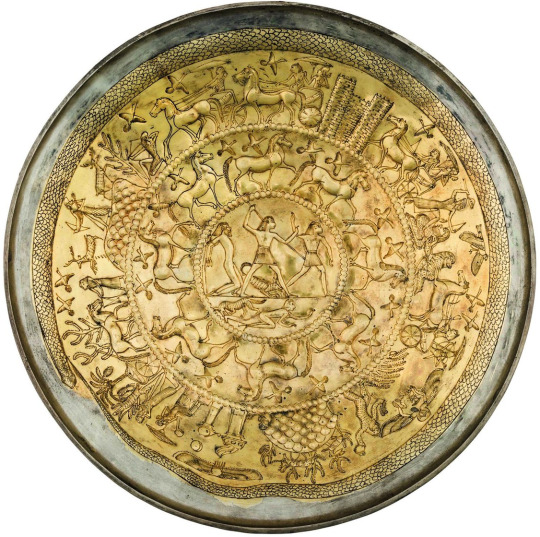

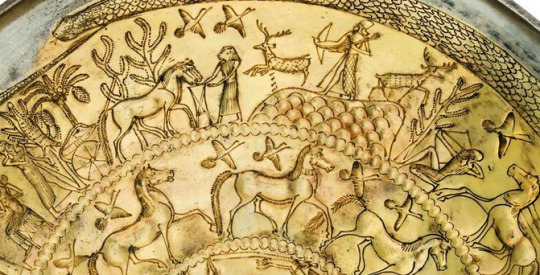

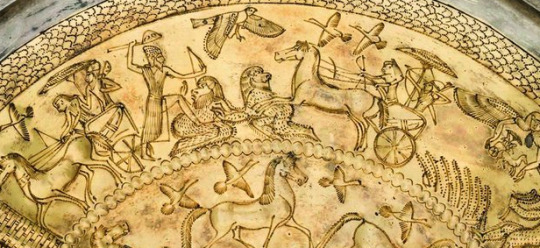
Phoenician Bowl with encircling Serpent
Bernardini Tomb (Palestrina, Italy)
c. 700 BCE
The National Etruscan Museum of Villa Giulia
Rome, Italy
#cyprus#rome#italy#egypt#egyptian gods#canaan#canaanite gods#phoenicia#phoenician gods#aram#aramean gods#syria#syrian gods#levantine gods#mesopotamia#mesopotamian gods#pagan gods#polytheism#archeology#magic#witchcraft#witchblr#paganblr#occult#uroboros#ouroboros#warfare#hunting#soldiers#birds
904 notes
·
View notes
Text
So who is Baal?
Baal or Baʻal, was a title and honorific meaning 'owner', 'lord' in the Northwest Semitic languages spoken in the Levant during antiquity.
Baal is a God of fertility, weather, rain, wind, lightning, seasons, war, sailors and so on.
Baal worship is also called Baalism.

Solid cast bronze of a votive figurine representing the god Baal discovered at Tel Megiddo, dating to the mid-2nd millennium BC.
His holy symbols are bull, ram and thunderbolt.
Baal was worshipped in ancient Syria, especially Halab, near, around and at Ugarit, Canaan, North Africa and Middle Kingdom of Egypt.
Baʿal is well-attested in surviving inscriptions and was popular in theophoric names throughout the Levant but he is usually mentioned along with other gods, "his own field of action being seldom defined". Nonetheless, Ugaritic records show him as a weather god, with particular power over lightning, wind, rain, and fertility. The dry summers of the area were explained as Baʿal's time in the underworld and his return in autumn was said to cause the storms which revived the land. Thus, the worship of Baʿal in Canaan—where he eventually supplanted El as the leader of the gods and patron of kingship—was connected to the regions' dependence on rainfall for its agriculture, unlike Egypt and Mesopotamia, which focused on irrigation from their major rivers. Anxiety about the availability of water for crops and trees increased the importance of his cult, which focused attention on his role as a rain god. He was also called upon during battle, showing that he was thought to intervene actively in the world of man, unlike the more aloof El. The Lebanese city of Baalbeck was named after Baal.
The Baʿal of Ugarit was the epithet of Hadad but as the time passed, the epithet became the god's name while Hadad became the epithet. Baʿal was usually said to be the son of Dagan, but appears as one of the sons of El in Ugaritic sources. Both Baʿal and El were associated with the bull in Ugaritic texts, as it symbolized both strength and fertility. He held special enmity against snakes, both on their own and as representatives of Yammu (lit. "Sea"), the Canaanite sea god and river god. He fought the Tannin (Tunnanu), the "Twisted Serpent" (Bṭn ʿqltn), "Lotan the Fugitive Serpent" (Ltn Bṭn Brḥ, the biblical Leviathan), and the "Mighty One with Seven Heads" (Šlyṭ D.šbʿt Rašm). Baʿal's conflict with Yammu is now generally regarded as the prototype of the vision recorded in the 7th chapter of the biblicalBook of Daniel. As vanquisher of the sea, Baʿal was regarded by the Canaanites and Phoenicians as the patron of sailors and sea-going merchants. As vanquisher of Mot, the Canaanite death god, he was known as Baʿal Rāpiʾuma (Bʿl Rpu) and regarded as the leader of the Rephaim (Rpum), the ancestral spirits, particularly those of ruling dynasties.
From Canaan, worship of Baʿal spread to Egypt by the Middle Kingdom and throughout the Mediterranean following the waves of Phoenician colonization in the early 1st millennium BCE. He was described with diverse epithets and, before Ugarit was rediscovered, it was supposed that these referred to distinct local gods. However, as explained by Day, the texts at Ugarit revealed that they were considered "local manifestations of this particular deity, analogous to the local manifestations of the Virgin Mary in the Roman Catholic Church". In those inscriptions, he is frequently described as "Victorious Baʿal" (Aliyn or ẢlỈyn Baʿal), "Mightiest one" (Aliy or ʿAly) or "Mightiest of the Heroes" (Aliy Qrdm), "The Powerful One" (Dmrn), and in his role as patron of the city "Baʿal of Ugarit" (Baʿal Ugarit). As Baʿal Zaphon (Baʿal Ṣapunu), he was particularly associated with his palace atop Jebel Aqra (the ancient Mount Ṣapānu and classical Mons Casius). He is also mentioned as "Winged Baʿal" (Bʿl Knp) and "Baʿal of the Arrows" (Bʿl Ḥẓ). Phoenician and Aramaic inscriptions describe "Baʿal of the Mace" (Bʿl Krntryš), "Baʿal of the Lebanon" (Bʿl Lbnn), "Baʿal of Sidon" (Bʿl Ṣdn), Bʿl Ṣmd, "Baʿal of the Heavens" (Baʿal Shamem or Shamayin), Baʿal ʾAddir (Bʿl ʾdr), Baʿal Hammon (Baʿal Ḥamon), Bʿl Mgnm.
The epithet Hammon is obscure. Most often, it is connected with the NW Semitic ḥammān ("brazier") and associated with a role as a sun god. Renan and Gibson linked it to Hammon (modern Umm el-‘Amed between Tyre in Lebanon and Acre in Israel) and Cross and Lipiński to Haman or Khamōn, the classical Mount Amanus and modern Nur Mountains, which separate northern Syria from southeastern Cilicia.
The major source of our direct knowledge of this Canaanite deity comes from the Ras Shamra tablets, discovered in northern Syria in 1958, which record fragments of a mythological story known to scholars as the Baal Cycle. Here, he earns his position as the champion and ruler of the gods. The fragmentary text seems to indicate a feud between him and his father El as background. El chooses the fearsome sea god Yam to reign as king of the gods. Yam rules harshly, and the other deities cry out to Ashera, called Lady of the Sea, to aid. Ashera offers herself as a sacrifice if Yam will ease his grip on her children. He agrees, but Baal opposes such a scheme and boldly declares he will defeat Yam even though El declares that he must subject himself to Yam.
With the aid of magical weapons given to him by the divine craftsman Kothar-wa-Khasis, Baal defeats Yam and is declared victorious. He then builds a house on Mount Saphon, today known as Jebel al-Aqra. (This mountain, 1780 meters high, stands only 15 km north of the site of Ugarit, clearly visible from the city itself.)
Lo, also it is the time of His rain.
Baal sets the season,
And gives forth His voice from the clouds.
He flashes lightning to the earth.
As a house of cedars let Him complete it,
Or a house of bricks let Him erect it!
Let it be told to Aliyan Baal:
'The mountains will bring Thee much silver.
The hills, the choicest of gold;
The mines will bring Thee precious stones,
And build a house of silver and gold.
A house of lapis gems!'
However, the god of the underworld, Mot, soon lures Baal to his death, spelling ruin for the land. His sister Anat retrieves his body and begs Mot to revive him. When her pleas are rebuffed, Anat assaults Mot, ripping him to pieces and scattering his remains like fertilizer over the fields.
El, in the meantime, has had a dream in which fertility returned to the land, suggesting that Baal was not indeed dead. Eventually he is restored. However, Mot too has revived and mounts a new attack against him.
They shake each other like Gemar-beasts,
Mavet [Mot] is strong, Baal is strong.
They gore each other like buffaloes,
Mavet is strong, Baal is strong.
They bite like serpents,
Mavet is strong, Baal is strong.
They kick like racing beasts,
Mavet is down. Baal is down.
After this titanic battle, neither side has completely prevailed. Knowing that the other gods now support Baal and fearing El's wrath, Mot finally bows before him, leaving him in possession of the land and the undisputed regent of the gods.
Baal is thus the archetypal fertility deity. His death signals drought and his resurrection, and brings both rain and new life. He is also the vanquisher of death. His role as a maker of rain would be particularly important in the relatively arid area of Palestine, where no mighty river such as the Euphrates or the Nile existed.
#baal#baal deity#baalism#canaanite gods#canaan#ancient history#ancient gods#history#ancient god#spiritual#deity#deities#religious#religion#religia#ancient religion#ancient world#gods#myth#mythos#ancient myths#mythology#mythology and folklore#myths#Canaanite religion#world religions#world history#ancient mythology
11 notes
·
View notes
Text



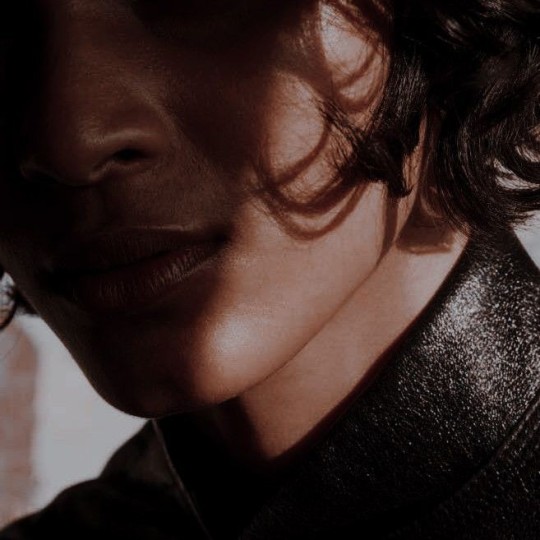






Shahar and Shalim = Twin Gods of Dusk, Day Cycle Dawn and Dusk, children of El and Asherah
#history#God of dusk#God of dawn#Canaanite gods#canaanite religion#canaanite mythology#Gods#Phoenician god#mythology#Shalim#Shahar#shalim#sharar#my favorite
12 notes
·
View notes
Text
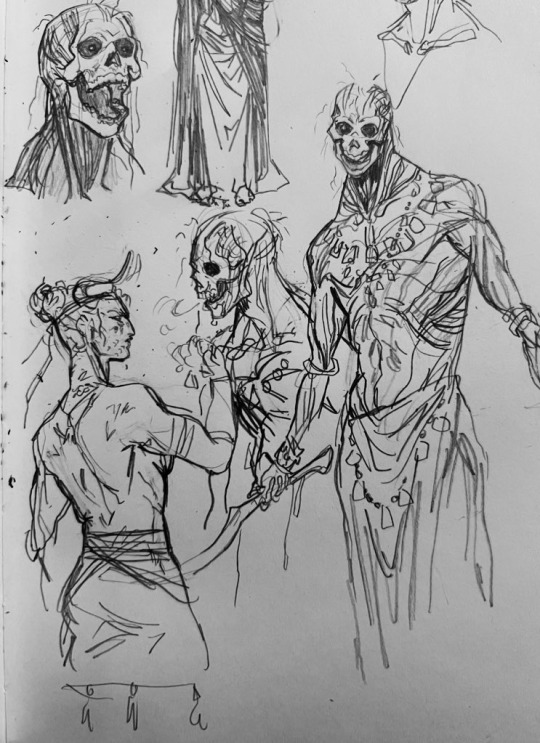

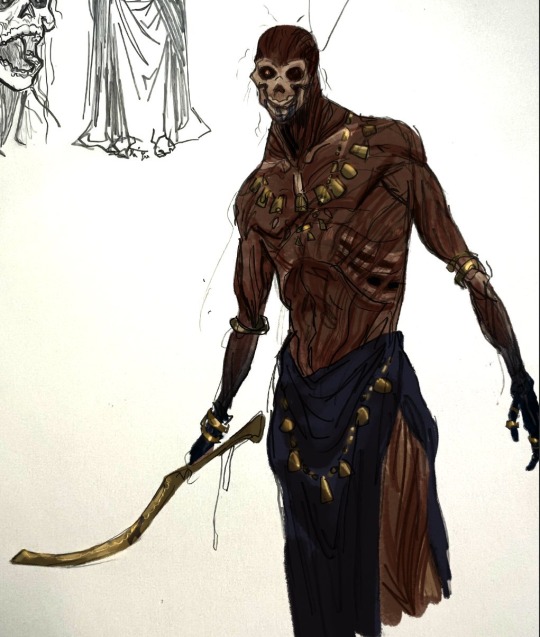
Mot, Canaanite god of death, pestilence, sterility.
His clothes are rotted fibre and raiment tarnished gold. His hands are stained with oil, flesh shrunken and dried by the sun and salt.
272 notes
·
View notes
Text


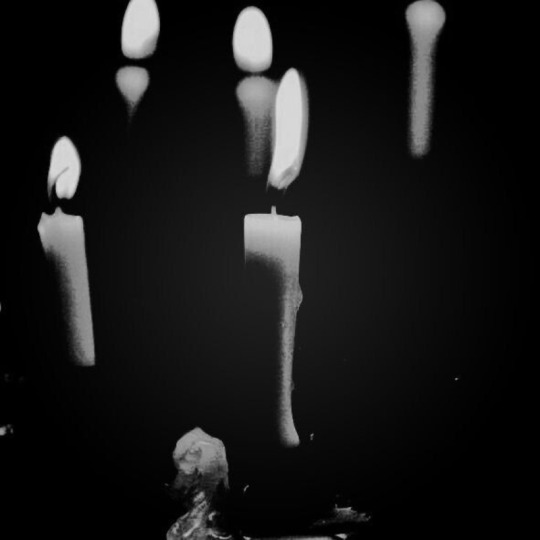
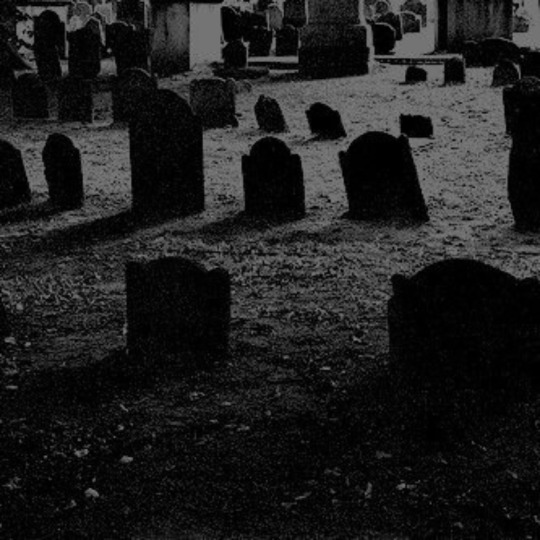

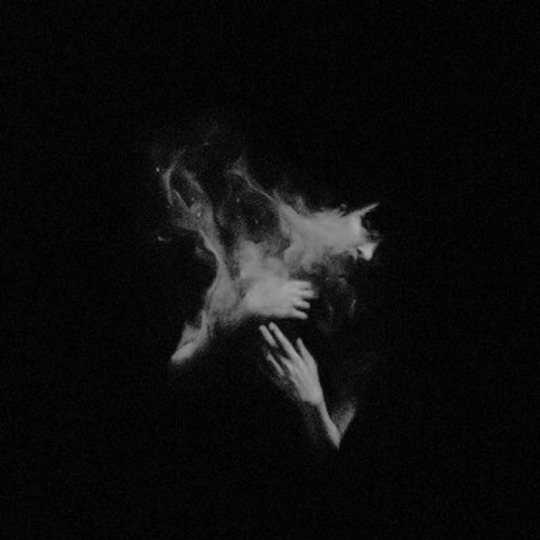



cannanite mythology: resheph
resheph is the god of the plague and of the underworld, the companion of anath. he was also a war god and was thus represented as a bearded man brandishing an ax, holding a shield, and wearing a tall, pointed headdress with a goat’s or gazelle’s head on his forehead.
#canaanite mythology#resheph#also egyptian myth#canaanite myth#mythologyedit#canaanitemythologyedit#mythedit#*mine*#gods and goddesses
150 notes
·
View notes
Text
According to my scant, second hand knowledge of the Jewish religion (idek the proper name, don't @ me), Catholicism, and Christianity, back when Jews were nomads, way before they settled down in one place, their god Yahweh was, in two words, a vicious dickhead of a storm god, and only after they settled down in Canaan did they try to calm him down by doing the theological equivalent of murdering the real wise and kind skydaddy god, El, blessed be his name, and then have Yahweh wear his flayed skin like some sort of grotesque mask and eat the rest, and that frankly goes pretty hard. Anyways I'm SOOO co-opting that into my writing, imagine worshipping the god that killed the supreme skydaddy and ate his corpse to gain his might. That's baller.
Edit: After further study, I have concluded that Yahweh was once an aspect of Qos, a mountain, weather and war god of the Edomite people. The ancient Israelites of Canaan then did a systematic eradication of every other god in the greater Canaan religion, including such gods as El and Asherah, Yam and Lotan, Arsu and Azizos, Aglibol, Malakbel, Yahribol, Bel, and Ba'al Hadad. In their shame after the crushing of the ancient Jewish kingdom under Babylon, the Jews, jealous in the banning of sacrifices to Yahweh, later wrote into their own Bible the banning of sacrifices to all gods. But Yahweh took sacrifices, and Yahweh took sacrifices in human infants, for Yahweh was a fellow Canaanite god just like the rest of them.
Edit 2: THIS POST IS ABOUT THE PRE-JUDAISM YAHWIST CULT OF THE ANCIENT CITY STATE OF ISRAEL AND HOW IT BECAME THE MODERN CULTS. Having to add this because some fucking [REDACTED] in the comments think that literal historical facts (with added hyperbole) is antisemitic somehow. They know who they are.
#worldbuilding#gods#worldbuilding religion#truth is stranger than fiction#but fr tho the ancient canaanites were nomadic raiders#and bandits too#and their god were similarly violent#only after they settled down did they try to smooth things out#the draft was made before oct 7#in the spirit of keeping it straight i won't comment on the newer news here#jewblr#jumblr
62 notes
·
View notes
Text
Someone on Tiktok was complaining about Leah Sava Jeffries casting as Annabeth and being like, "HAVE YOU EVER SEEN A BLACK GREEK?" "Black Greeks didn't exist back then"
Honestly this pisses me off on a Whole new Level because the somewhat natural Progression of every Riordanverse lover is that eventually you start to like Mythological and Historical related stuff, like God of War, Hades, Overly Sarcastic Productions, Epic:The Musical, etc. But this person did not go through this and also because apparently, they think that African Greeks didn't exist.....
African Greeks have existed since Antiquity and the majority of Modern Black Greeks came from Sudan, as the Ottoman Turks bought their Ancestors who were slaves to Avato, a settlement in the Xanthi regional unit of Greece.
So Black Greeks exist, the Greek Gods could be Black idk considering that it's generally believed that Athena is not just Greek Goddess but also influenced greatly by Inanna, an ancient Mesopotamian goddess of love, war, fertility, divine law, and political power and Anat, Canaanite Goddess of war and hunting.
So the Greek Gods are a Mixed bag of many cultures, singling them out as Greek Solely is kind of missing the point.
#pjo#athena#pjo athena#pjo tv series#pjo annabeth#annabeth chase#leah sava jeffries#black greeks#afro greeks#african greeks#percy jackson and the olympians#greek tumblr#greek gods#greek mythology#ancient greece#mesopotamia#canaanite#mythology and folklore#greeks#greek history#african history#historical context#historical
35 notes
·
View notes
Text
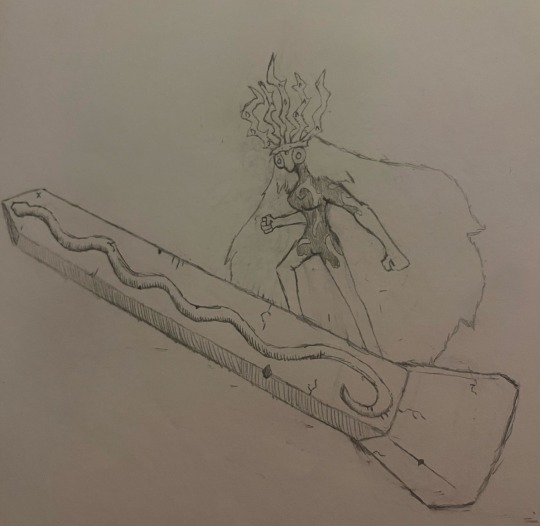
Asherah, the original mother goddess of the early Semitic mythos. She was the wife of the supreme god El. Asherah birthed the Canaanite pantheon, from Baal and Astarte to Yam and Mot, all of them were born from her union with El. Asherah’s origins are unknown, however it’s believed that she was the feminine aspect of El. In one of the few surviving myths, Asherah is shown as Yam’s biggest supporter for the throne of the chief god. Her epithet of ‘Asherah of the sea’ illustrates just how important their relationship was. Despite her support, Yam ultimately loses to Baal for the throne. Asherah in modern abrahamic faiths was reduced to a false idol, with her ‘poles’ being targeted and destroyed.
Asherah is the earliest depiction of the Mother Goddess trope, with her role in Canaan being so influential it affected the religious landscape. The Mother Goddesses became a ubiquitous feature among polytheistic religions, to the point where the absence of one is something to note. Though her name was demonized in modern times, her essence still lives on in her descendants faiths. As Eve from the garden of Eden is proposed to be derived of Asherah. As El was the predecessor of the Abrahamic God, Asherah’s relationship to the omnipotent deity has become a focal point for her. Her legacy may even live on in the feminine aspect of modern god: Shekinah, and the gnostic Aeon: Sophia.
#art#character design#mythology#asherah#athirat#semitic#canaan#canaanite mythology#semitic mythology#judaism#christianity#mother goddess#goddess#tree god#false idols#fertility god#gnosticism#abrahamic religions#abrahamic mythology#deity
16 notes
·
View notes
Text

Hadad from Canaanite religion.
The Canaanite religion encompassed the array of ancient Semitic beliefs followed by the Canaanite people in the ancient Levant, spanning from the early Bronze Age to the first centuries CE.
Hadad's representation featured a bearded figure adorned with a bull-horned headdress, wielding a club and a thunderbolt. As the consort of Atargatis and the father of Gibil or Girra, he held sway over land and human fertility. Linked to Zeus in Greek mythology, Jupiter in Roman lore, and Teshub in Hurrian beliefs, Hadad stood as a prominent and influential deity in the ancient Near East.
Follow @mecthology for more mythology and legends.
Pic generated using AI.
Source: Wikipedia and various.
#mecthology#mythology#myth#legends#hadad#Canaanite religion#canaanite#ancient#mitoloji#follow#zeus#gods#pagan
10 notes
·
View notes
Photo

Figurine of the Canaanite God El, Bronze with gold leaf, Megiddo, Stratum VII, Late Bronze II (1400-1200 BC)
#el#al#el shaddai#allah#anu#bronze age#israel#canaan#canaanite#phoenician#gods#the most high#hebrew#ancient israel
49 notes
·
View notes
Text
Deity Dagan
Originally a god of West Semitic speakers from the Levant, but worshipped widely throughout the Near East, including Mesopotamia.
Deity of grain, as well as its cultivation and storage. Indeed, the common word for "grain" in Ugaritic and Hebrew is dagan. According to one Sumerian tradition and to the much later Philo of Byblos, Dagan invented the plow. In the north, he was sometimes identified with Adad. Thus, he may have had some of the characteristics of a storm god. In one tradition his wife was Ishara, in another Salas, usually wife of Adad. Salas was originally a goddess of the Hurrians. Dagan also had netherworld connections. According to an Assyrian composition, he was a judge of the dead in the lower world, serving with Nergal and Misa-ru(m), the god of justice. A tradition going back at least to the fourth century BCE identified Dagan as a fish god, but it is almost certainly incorrect, presumably having been based upon a false etymology that interpreted the element "Dag" in Dagan as deriving from the Hebrew word dag "fish."
The earliest mentions of him come from texts that indicate that, in Early Dynastic times, Dagan was worshipped at Ebla. Dagan was taken into the Sumerian pantheon quite early as a minor god in the circle of Enlil at Nip-pur. Kings of the Old Akkadian peri-od, including Sargon and Narām-Sin, credited much of their success as conquerors to Dagan. Sargon recorded that he "prostrated (himself in prayer before Dagan in Tutul [sic]" (Oppen-heim, ANET: 268). At the same time, he gave to the god a large area of the country he had just conquered, including Mari, Ebla, and larmuti in western Syria. A number of letters from the Mari archives, dated mainly to the reign of Zimri-Lim, record that Dagãn was a source of divine revela-tion. The letters reported prophetic dreams, a number of which came from Dagan, conveyed by his prophets and ecstatics. In his law code, Hammu-rapi credits Dagan with helping him subdue settlements along the Euphrates.
The Assyrian king Samsi-Adad I commissioned a temple for him at Terqa, upstream from Mari, where funeral rites for the Mari Dynasty took place.
In the Old Babylonian period, kings of the Amorites erected temples for Dagan at Isin and Ur. In the Anzû(m) myth, Dagan was favorably coupled with Anu(m). At Ugarit Dagan was closely associated with, if not equated to, the supreme god El/I(u). Although he is mentioned in the mythic compositions of Ugarit as the father of the storm god Ba'lu/ Had(d)ad, Dagan plays only a very minor role. His popularity is indicated by his importance in offering and god lists, one of which places him third, after the two chief gods and before the active and powerful god Ba'lu/ Had(d)ad. Dagan is attested in Ugaritic theophoric names. In Ugaritic texts the god is often referred to as "Dagan of Tuttul." It might also be the case that one of the two major temples of the city of Ugarit was dedicated to him, and he might there have been identified with the chief god I(u) / El.
Festivals for Dagãn took place at Ter-ga and Tuttul, both of which were cult centers of the god. He was certainly worshipped at Ebla and also at Mari.
At Mari, in Old Babylonian times, he appears as fourth deity on a god list; that is, he was very important. He was venerated also at Emar. There a "Sacred Marriage" ritual between Dagan and the goddess Nin-kur was celebrated.
At the same city, a festival was held in honor of "Dagan-Lord-of-the-Cattle," at which the herds of cattle and prob. ably sheep were blessed.
According to the Hebrew Bible, Dagan was the national god of the Philistines. I Samuel:5-6 tells of the capture of the Ark of the Covenant by the Philistines. It was customary in the Ancient Near East for the conquerors to carry off the deity statues of the conquered to mark the surrender not only of the people, but also of their deities.
So the Philistines took the Ark, the symbol of the god of the Israelites, into the temple of Dagan at Ashdod. Since the Israelites had no statues of their deity, the much revered Ark was an obvious substitute. In this way, the Philistines marked the submission of the Israelite god to Dagan. However, on the next day, the people of Ashdod found the statue of Dagan lying face down in front of the Ark. The following day the same thing happened except that the head and hands of Dagan's statue lay broken on the temple threshold. This biblical account seems to be an etiology for a practice of the priests of the temple of Dagan at Ashdod, for it states that for this reason it is the custom of the priests of Dagan not to tread on the threshold as they enter the temple of Dagan. The best-known of the biblical stories that mention Dagan is in Judges 16, the tale of Samson and Delilah. After Delilah arranged for the Philistines of Gaza to capture Samson, they blinded him, shackled him, and made him a slave at a mill. During a festival to Dagan, the Philistines took Samson to be exhibited in Dagan's temple, where thou sands of Philistines had gathered for the celebrations. After praying to the Israelite god, the now long haired Samson got back his old strength. By pushing against two central pillars, he brought the temple crashing down on himself and on more Philistines than he had killed in his whole lifetime of killing Philistines.
— From a Handbook to Ancient Near Eastern Gods & Goddesses by Frayne & Stuckey page 67-69
#pagan#polytheism#levpag#philistines#israelites#canaanites#assyrians#1 samuel#tanakh#mesopotamians#dagan#dagan deity#deity#god#quote#sumerian polytheism#levant#ancient near east#landof2rivers#quote pile#put this in text for someone so thought id post it#eblaite#ebla
8 notes
·
View notes
Text

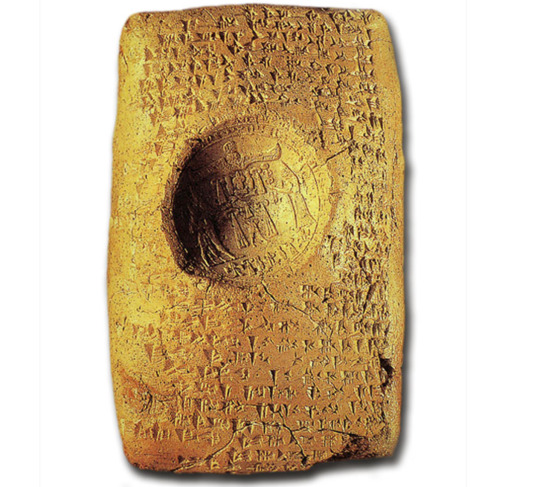
Divorce-Writ of King Ammistamru II
Ugarit, Syria
c. 1250 BCE
A tablet documenting the divorce of King Ammistamru II of Ugarit fromhattusa the daughter of the Amorite king Benteshina, sealed by the Hittite King Ammistamru. The king stands to the right, holding a spear, next to the "Weather God" who holds a club. They are both facing a long-robed female goddess (Arima, the chief Hittite sun-goddess) who stands at the left.
Source: Virtual Museum of Syria
#ugarit#hittite#baal#hadad#ugaritic costume#arima#sun goddess#huttusa#hittite gods#canaan#canaanite gods#phoenicia#phoenician gods#aram#aramean gods#syria#syrian gods#levantine gods#mesopotamia#mesopotamian gods#pagan gods#polytheism#archeology#magic#witchcraft#witchblr#paganblr#occult
266 notes
·
View notes
Text
years ago i wrote down a bunch of speculative stuff about how the summons of golden sun fit into the setting, given that iris is like. actually recognized within the text of the game as being a thing (or at least is heavily implied as such). cannot remember most of it but i DO remember writing that in some places frogs are considered messengers of cybelle and will narc on you to her if you commit secret crimes in front of them, thus engendering her wrath
i think i also had something about tiamat/vesta being considered a creation figure for proxians, given how closely tied they are to dragons. something about her representing both fire's nourishing warmth and destructive capabilities i don't really remember
#heavily implied being she MIGHT be the goddess of rainbows mentioned in mercury lighthouse#frogs would also be thought to repeat whatever gossip they hear back to anyone that walks by#so it's also considered a bad idea to talk about secret things in front of them#golden sun#i think i stalled out when i got to moloch bc it's so so different from its historical depictions like#how do you get 'sacred ice monster' from 'canaanite god connected to fire and child sacrifice'
2 notes
·
View notes
Text


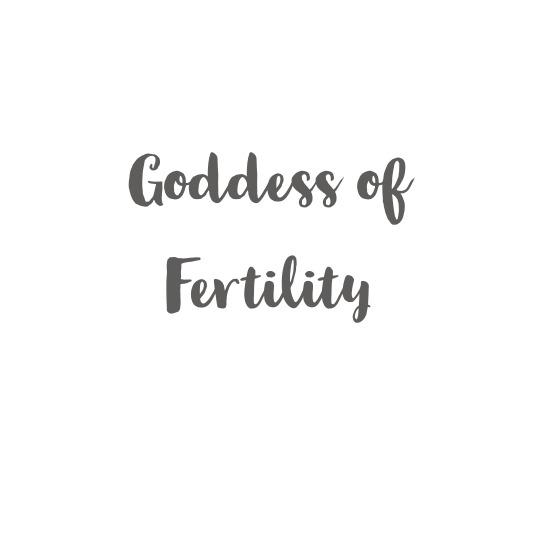

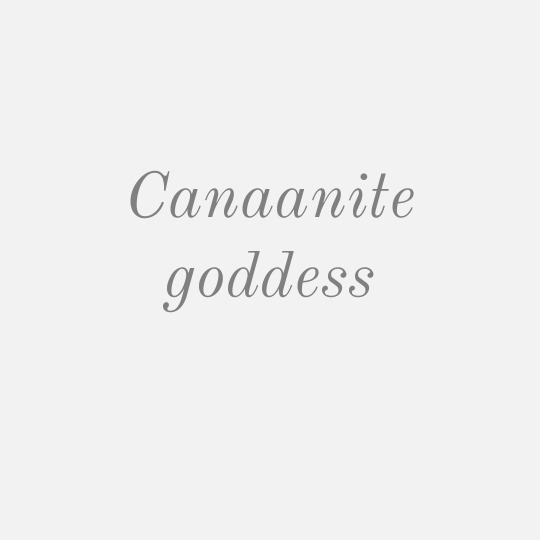
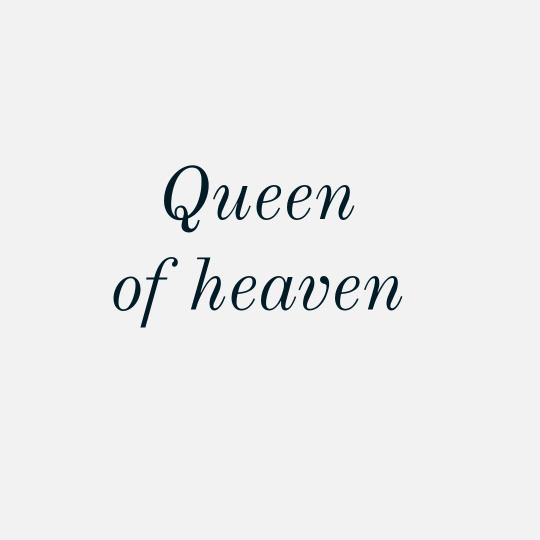

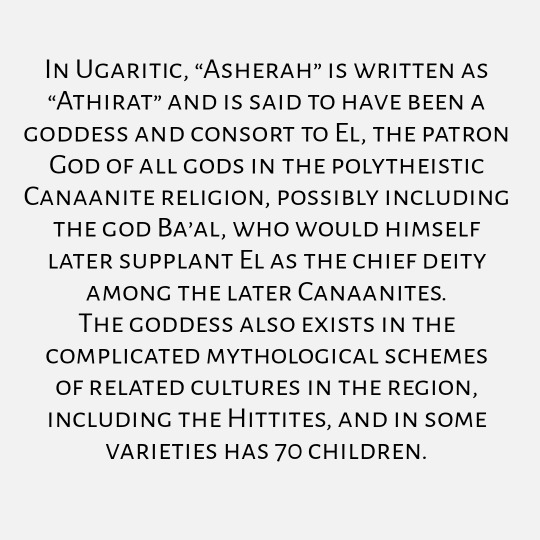


#history#goddess asherah#asherah goddess#earth goddess#canaanite goddess#gods and goddesses#goddess#Goddess Asherah of the sea#Athirat#canaanite mythology#Mythology#Asherah#asherah#Motherhood goddess#goddess of fertility#Moon goddess#Ocean goddess#Wife of god#My favorite#My edit
64 notes
·
View notes
Text
2023 AUGUST 20 Sunday
"If, following the example of the Canaanite woman, we persevere in prayer with unshakeable firmness, our Creator’s grace will be present to us. It will correct all the errors in us, it will sanctify all that is impure, it will pacify all agitation. For the Lord is faithful and just. He will forgive our sins and will purify us from every stain if we cry to him with the attentive voice of our heart."
~ Saint Bede the Venerable, Homily on the Gospels I, 22
#bible#gospel#further reading#Saint#Bede the Venerable#homily#follow#example#Canaanite#woman#persever#prayer#unshakeable#firmness#God#Lord#Jesus#Christ#creator#grace#present#correct#errors#sancitfy#impure#pacify#agitation#faithful#just#forgive
3 notes
·
View notes
Text
God's Angel to Lead

27 I will send my terror before you, and will confuse all the people to whom you come, and I will make all your enemies turn their backs to you.
28 I will send the hornet before you, which will drive out the Hivvi, the Kana`ani, and the Hittite, from before you.
— Exodus 23:27-28 | Hebrew Names Version (HNV)
The Hebrew Names Version Bible is in the public domain.
Cross References: Genesis 15:19; Exodus 33:2; Genesis 35:5; Exodus 15:16; Exodus 33:2; Exodus 34:11; Deuteronomy 2:25; Deuteronomy 7:20; Deuteronomy 7:23; Deuteronomy 11:25; Joshua 2:9; Joshua 24:11-12; Psalm 80:9
#Angel of God#battle#terror#Hivites#Canaanites#Hittites#Exodus 23:27-28#Book of Exodus#Old Testament#HNV#Hebrew Names Version Bible
15 notes
·
View notes